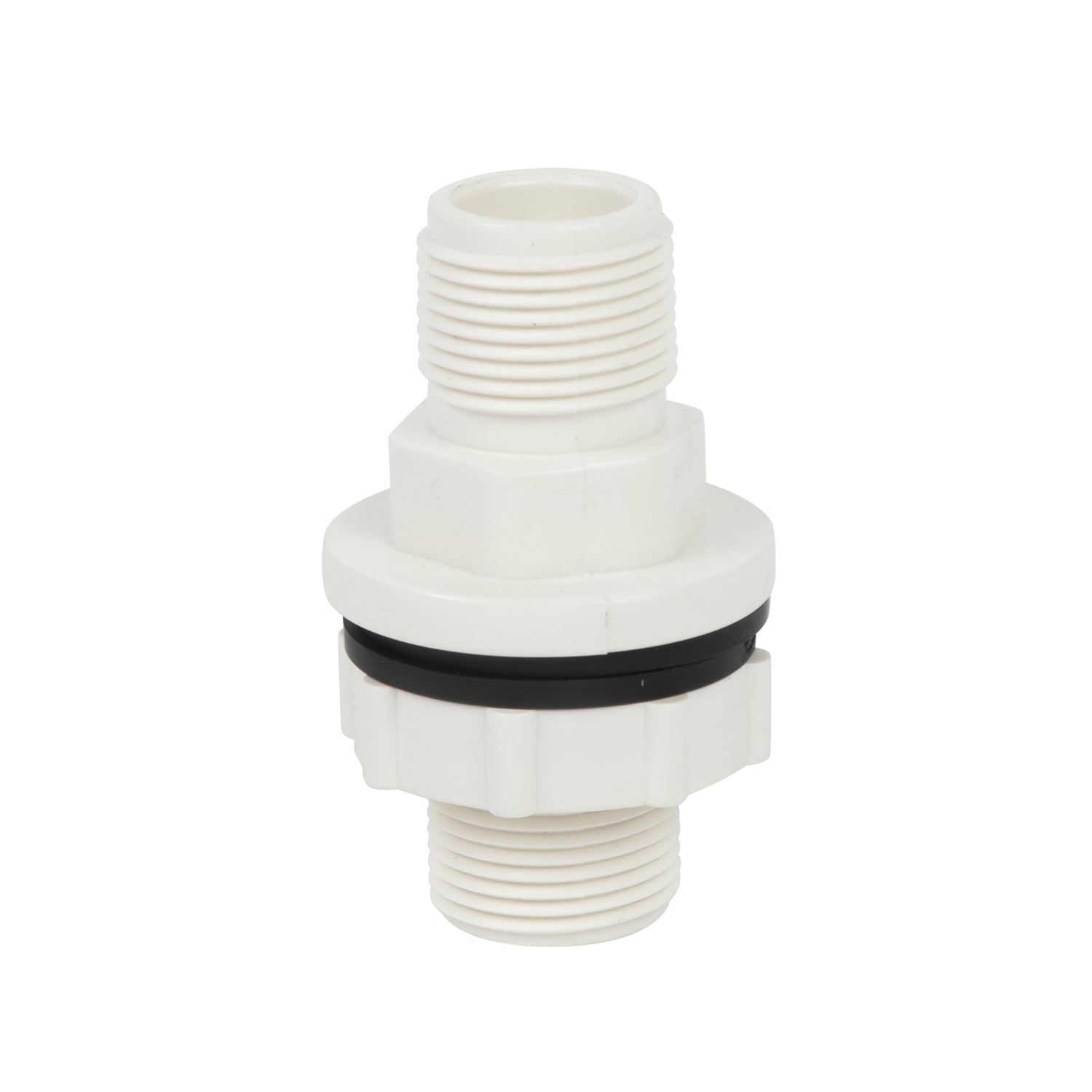UPVC Ball Valve Specifications
Attribute | Specifications |
Size Range | 1/2" to 8" |
Standards | ASTM, DIN, JIS, BS |
Shape Options | Octagonal ball valve, Compact ball valve |
Connection Options | Threaded connection, Socket connection |
Body Material | UPVC |
Seat Seal Material | TPE |
Ball Material | PP |
Handle Material | ABS |
O-ring Seal Material | NBR |

Characteristic Description
Chemical-Resistant Material Selection
The ball valve’s UPVC body offers excellent resistance to acids, alkalis, and organic solvents, while the TPE seat seal and PP ball maintain stability when in contact with various chemicals. The ABS handle is resistant to chemical fumes, and the NBR O-ring seal provides reliable leak prevention without reacting with corrosive substances.
Robust Structural Design
With two shape options (octagonal and compact) and two connection types (threaded and socket), the valve adapts to diverse chemical processing setups. The innovative O-ring placement inside the valve body—instead of the handle—enhances structural integrity and reduces the risk of chemical-induced seal failure.
Market Research
The chemical processing industry demands valves that can withstand aggressive substances, prevent leaks, and comply with strict safety standards. The global chemical PVC valve market is growing as manufacturers seek cost-effective alternatives to metal valves that are prone to corrosion. HJ PVC Ball Valve’s compliance with ASTM, DIN, JIS, and BS standards, combined with its chemical resistance, positions it as a key player in this market. The need for low-maintenance, long-lasting valves further fuels its adoption in chemical facilities.
Key Features
Chemical Compatibility
All materials are carefully selected to resist a wide range of chemicals, from weak acids to strong alkalis, ensuring safe operation in diverse chemical processing applications.
The integrated O-ring seal in the valve body, assembled via precision molding, creates a tight seal that prevents chemical leaks—a critical safety feature for chemical facilities.
Easy Maintenance in Hazardous Environments
The detachable handle is a highly practical feature. It enables rapid and efficient maintenance procedures. Significantly, it does so without the need to disassemble the entire valve. This is of great importance as it effectively minimizes the exposure of maintenance personnel to potentially hazardous chemicals. By eliminating the necessity for complete valve disassembly, the process becomes not only safer but also more time - efficient. Moreover, this design greatly reduces downtime. With less time spent on maintenance, the valve can resume its normal operation more quickly, ensuring continuous and smooth functioning of the relevant systems.
Performance Meets
Complies with international standards ASTM, DIN, JIS, and BS, ensuring safety and compatibility in global chemical facilities.
Each valve undergoes a 24-hour high-pressure air test (equivalent to 16pn water pressure) to ensure leak-proof performance.
Size range from 1/2" to 8" accommodates small laboratory equipment to large industrial chemical pipelines.
Customized Service
Chemical-specific modifications: Adjust seal or component materials to handle extreme or specialized chemicals.
Size customization: Tailor valve sizes to fit unique chemical processing equipment or piping systems.
Connection type customization: Modify threaded or socket connections to match existing infrastructure.
FAQ
Q1: What types of chemicals can this valve handle?
A1: It is compatible with most acids, alkalis, organic solvents, and aqueous solutions—contact us with specific chemical names for detailed compatibility checks.
Q2: What is the operating temperature range for this valve?
A2: The valve performs reliably between -10°C and 60°C, suitable for most standard chemical processing conditions.
Q3: How often should the valve be inspected in chemical applications?
A3: For continuous use with corrosive chemicals, we recommend monthly visual inspections and seal replacement every 6–12 months, depending on usage intensity.






